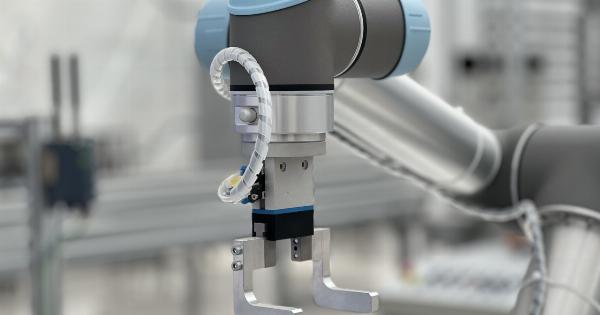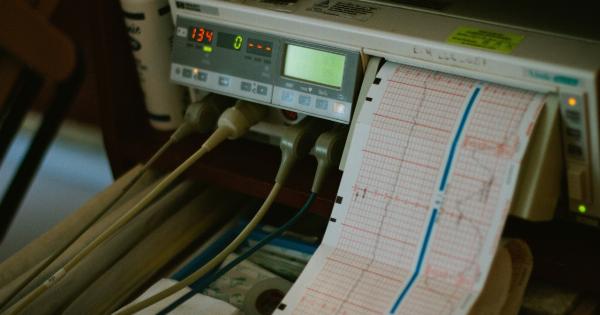In recent years, robotic surgeries have gained significant attention in the medical field. These advanced surgical techniques incorporate robotic systems to assist surgeons during complex procedures.
While the technology brings many benefits, it is crucial for patients to have a comprehensive understanding of robotic surgeries before considering them as a treatment option. This article aims to shed light on uncovered robotic surgeries and provide patients with important information.
1. What are Robotic Surgeries?
Robotic surgeries involve the use of robotic systems to aid surgeons in performing various procedures. These systems consist of robotic arms equipped with surgical instruments, a control console for the surgeon, and a high-definition 3D vision system.
The surgeon manipulates the surgical instruments through the control console, while the robotic arms precisely replicate the surgeon’s movements in real-time.
2. Advantages of Robotic Surgeries
Robotic surgeries offer several advantages compared to traditional surgeries:.
Precision: The robotic arms can make highly precise movements, providing surgeons with enhanced control during delicate procedures. This precision reduces the risk of errors and allows for greater accuracy.
Minimal Invasive: Robotic surgeries are often performed using small incisions, resulting in less trauma to the patient’s body. This leads to reduced scarring, shorter hospital stays, and faster recovery times.
Improved Visualization: The 3D vision system in robotic surgeries provides surgeons with a magnified and clear view of the surgical site. This enhanced visualization allows for better decision-making during the procedure.
Reduced Blood Loss: The robotic arms in these surgeries include advanced hemostatic features, minimizing blood loss during the procedure. This aspect can be particularly beneficial in surgeries with a higher risk of bleeding.
3. Types of Robotic Surgeries
Robotic surgeries can be categorized into various types based on the medical specialty they serve. Some common types include:.
Robotic-Assisted Laparoscopic Surgeries: These surgeries involve the use of robotic systems for minimally invasive procedures in the abdominal area. Examples include robotic-assisted prostatectomy and robotic-assisted hysterectomy.
Cardiothoracic Surgeries: In this category, robotic surgeries are utilized for procedures involving the heart and chest. Examples include mitral valve repair and coronary artery bypass.
Orthopedic Surgeries: Robotic systems are employed in orthopedic surgeries to enhance precision and accuracy. Examples include total joint replacements and spinal surgeries.
Urological Surgeries: Robotic-assisted surgeries in urology can include procedures such as robotic-assisted kidney surgery and robotic-assisted bladder removal.
4. Understanding Insurance Coverage
When considering robotic surgeries, it is essential for patients to understand the coverage provided by their insurance plans.
Robotic surgeries are often more expensive than traditional surgeries, primarily due to the cost of the robotic systems and associated technology. Therefore, it is vital to verify with the insurance provider if the procedure is covered and to what extent.
Insurance coverage for robotic surgeries may vary depending on factors such as the type of surgery, medical necessity, and the insurance policy.
Some insurance plans may cover the procedure partially, while others may require prior authorization or impose specific limitations.
5. Medical Facilities Offering Robotic Surgeries
Not all healthcare facilities have the infrastructure or resources to offer robotic surgeries. Patients interested in undergoing a robotic procedure should research and identify medical facilities that provide these services.
It is crucial to choose a reputable facility with experienced surgeons who specialize in robotic surgeries.
When selecting a medical facility, patients should consider the facility’s robotic surgery experience, patient outcomes, and the support services available.
It may also be helpful to consult with the surgeon regarding their expertise and success rates specifically related to robotic surgeries.
6. Potential Risks and Limitations
While robotic surgeries offer numerous benefits, it is important to acknowledge and understand the potential risks and limitations associated with the technology:.
Technical Issues: Robotic systems can encounter technical malfunctions, although these instances are relatively rare.
Surgeons and the operating team are trained to handle such situations, but patients must be aware of the probability, albeit low, of technical issues during a robotic surgery.
Steep Learning Curve: Robotic surgeries require specialized training for surgeons due to the complexity of operating the robotic systems.
Choosing a surgeon with extensive experience in the specific procedure is crucial to minimize the risks associated with the learning curve.
Cost: As previously mentioned, robotic surgeries can be more expensive compared to traditional surgeries.
Patients should be aware of the potential financial implications and consider discussing the costs with their insurance provider and medical facility.
Limited Availability: While robotic surgeries are becoming increasingly common, not all medical facilities offer these procedures. Accessibility to robotic surgeries may be limited in certain geographical areas.
Patients may need to travel to a different city or state to undergo the procedure.
7. Preparing for a Robotic Surgery
Prior to undergoing a robotic surgery, patients must prepare in several ways:.
Consultation and Evaluation: Patients should schedule a consultation with the surgeon who will perform the procedure.
During this consultation, the surgeon will evaluate the patient’s medical condition, discuss the risks and benefits of the surgery, and address any concerns or questions.
Pre-operative Instructions: The medical facility will provide specific instructions on how to prepare for the surgery.
This may include fasting for a certain period of time, discontinuing certain medications, and following any necessary hygiene measures.
Health Assessment: The surgeon may order several tests or assessments to ensure the patient is in optimal health for the surgery. These can include blood tests, imaging scans, and electrocardiograms.
Arrangements: Patients should make arrangements for transportation to and from the medical facility, as well as for any necessary post-operative care or assistance during the recovery period.
8. Post-operative Care and Recovery
After a robotic surgery, patients can expect a recovery process similar to that of traditional surgeries. The duration and specifics of the recovery period may vary depending on the type and complexity of the procedure.
Patients should follow the post-operative instructions provided by the surgeon and medical facility.
This may include taking prescribed medications, attending follow-up appointments, and gradually resuming normal activities based on the surgeon’s guidance.
It is important to note that while robotic surgeries are generally associated with shorter hospital stays and faster recoveries, each patient’s recovery journey may be unique.
Patience and adherence to the prescribed post-operative care plan are crucial for a successful recovery.
9. Discussing Robotic Surgeries with the Surgeon
Prior to undergoing a robotic surgery, patients should have open and honest discussions with their surgeon. It is crucial to address any concerns, ask questions, and ensure a clear understanding of the procedure, risks, benefits, and alternatives.
The surgeon should provide comprehensive information regarding the specific robotic procedure, expected outcomes, potential complications, and the recovery process.
Patients should feel comfortable voicing their concerns and seeking clarification on any aspect of the surgery.
10. Conclusion
Robotic surgeries have revolutionized the field of medicine, offering advanced techniques that bring benefits such as increased surgical precision, minimal invasiveness, improved visualization, and reduced blood loss.
However, patients must be well-informed before considering a robotic surgery as a treatment option.
Understanding insurance coverage, researching medical facilities, knowing the potential risks and limitations, preparing for the surgery, and discussing concerns with the surgeon are vital steps in the decision-making process.
Only with comprehensive knowledge can patients make informed choices regarding their healthcare.




























